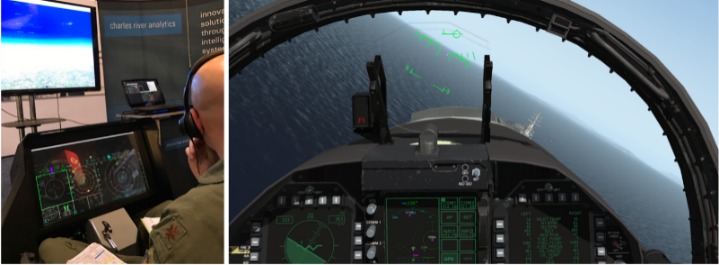PHARAOH
A sensor suite to measure pilot physiology during flight
Physiologically Assessed Ratings of Aircraft Opertion and Handling (PHARAOH)
PHARAOH uses a sensor suite to measure pilot physiology during live, virtual, and constructed training environments without diverting the pilot’s attention. We teamed with current and qualified pilot subject matter experts from Rickard Consulting Group to unobtrusively integrate and test PHARAOH in modern rotary and fixed-wing platform cockpit settings.
“PHAROAH helps engineers assess aircraft for mission readiness with objective data. We’re using sensors to monitor pilots’ muscle movements and blink rate, as well as the wealth of information we derive from our fNIRS sensor, to reduce the cognitive burden in the cockpit.”

Dr. Aaron Winder,
Scientist at Charles River and Technical Lead on the PHARAOH effort
Flight Test Teams rely on handling quality ratings (HQRs) to evaluate new aircraft maneuverability and performance. Currently, a pilot must verbally communicate their perceptions of aircraft handling to an engineer for HQR evaluation. When delivered after the flight test, subjective event recall places cognitive burden on the pilot and can yield unreliable data for the engineer.
Functional Near-Infrared Spectroscopy (fNIRS) sensors use near-infrared light to measure changes in blood oxygenation, which are related to ongoing brain activity. Charles River and Plux, a biomedical engineering company, jointly announced the launch of a miniaturized fNIRS sensor in 2018. The PHARAOH sensor suite includes our wearable fNIRS sensors.
PHARAOH integrates physiological measurements seamlessly into current flight and simulator environments. Engineers will have continuous, quantitative, and objective information on pilots in live, virtual, constructive (LVC) flight scenarios. The result is robust HQR assessments and insight into the experience of pilots through streaming physiological and contextual flight data.
PHARAOH extends Sherlock™, our open and extensible software and hardware platform that lets users rapidly reason about human physiological, neurological, and behavioral states. We will integrate PHARAOH with GeMFIRE, our game-based virtual flight environment that can be tailored to a wide variety of emerging training gaps on multi-air platforms.
Contact us to learn more about PHARAOH and our other Healthcare Support and Training capabilities.
This material is based upon work supported by the Defense Logistics Agency under Contract No. SP4701-21-P-0030. Any opinions, findings and conclusions or recommendations expressed in this material are those of the author(s) and do not necessarily reflect the views of the Defense Logistics Agency.


